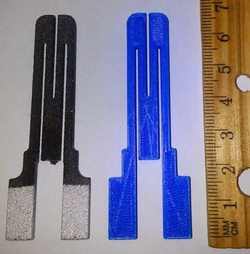Since the material is extremely hard and light, this New Generation conducting plastic may be very useful for many applications. In particular, it can replace heavy structures for automobile, producing very light vehicles with high mileage. It may also replace current conducting polymers, which are used for OLEDs (Organic light emitting diodes) and solar panels, to name a few applications.
When compared to current conducting polymers, this material is much more durable, very light, easier to manufacture and manipulate its properties, it may be used in many different areas, including, light plastic materials for auto interiors and NASA's space research for future launch and atmospheric reentry vehicle and radiation-shielding materials.
Electronic applications such as TV and computer screens, cellphone screens, flexible screens, solar panels, supercapacitors, rechargeable batteries and solid electrolytes may be good candidates. This new material might lead the way into a new frontier of Plastic Electronics, instead of molecular electronics.
3D Printing is also a promising field for this material. Conducting polymers used in current printing technology can be replaced by more conductive, efficient and customizable filaments with a wider resistivity range.
When compared to current conducting polymers, this material is much more durable, very light, easier to manufacture and manipulate its properties, it may be used in many different areas, including, light plastic materials for auto interiors and NASA's space research for future launch and atmospheric reentry vehicle and radiation-shielding materials.
Electronic applications such as TV and computer screens, cellphone screens, flexible screens, solar panels, supercapacitors, rechargeable batteries and solid electrolytes may be good candidates. This new material might lead the way into a new frontier of Plastic Electronics, instead of molecular electronics.
3D Printing is also a promising field for this material. Conducting polymers used in current printing technology can be replaced by more conductive, efficient and customizable filaments with a wider resistivity range.


